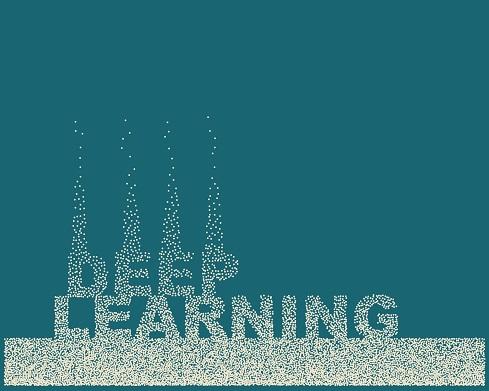What Execs Should Know About Deep Learning
Source: Mo Patel, Teradata
 Deep learning takes a step beyond machine learning, and it's first killer app is computervision.
Deep learning takes a step beyond machine learning, and it's first killer app is computervision.
From Uber using past trips to predict its customers’ future habits to Facebook automatically tagging a picture you upload of your family, data is everywhere these days, and smart companies are using it to inform a better experience for their customers. Could the same be true for your company?
When it comes to making sense of big data, enterprises are heavily invested in machine learning. Simply put, machine learning uses algorithms to find patterns in data fed to it by humans. (There are resources out there for executives who want a high-level overview of this approach.)
Typically, machine learning deals with data that is relatively simple. This low-dimensional data, whether structured or unstructured, can be analyzed in light of a handful of factors. But eventually, companies started amassing a lot of highly complex data, things like images. That meant it was time for more sophisticated analytics tools. Enter deep learning.
“Wait,” you may be thinking. “I’ve been using those terms interchangeably. Aren’t they the same thing?” That is a pretty widespread assumption, but deep learning is exactly as it sounds, deeper.
Traditional machine learning requires humans to provide context for data — something called feature engineering — so a machine can make better predictions. Deep learning uses a layered approach to make better decisions by constantly curating the data it is fed. It simplifies feature engineering in many ways, putting more of the work on machines, and ever more complex, self-learning models. Essentially, deep learning can assess and categorize data like our five human senses, and then make correlations more akin to the human mind.
How can deep learning change your business?
So how do you know if deep learning is right for your business? For starters, you need a lot of data for it to work. It’s a powerful tool, but you need a really complex problem to use it effectively. The amount of data produced every day sits around 2.5 exabytes, and businesses now equate parsing through all this data as a solution to their business problems. And with deep learning, they now have smart machines to parse through their most complex, multidimensional data to gain new insights.
Deep learning is great for video, speech or images. Traditional machine learning models can’t make heads-or-tails of complex images, for example. Yet deep learning and its tool computervision, can, relatively easily, teach itself the difference between cats and dogs. Vision and image detection are great deep learning applications. With it, businesses can track sentiment from pictures on Instagram. Or it can build image recognition into apps, so users that want to re-purchase an item can simply capture it on the camera — a current feature of Amazon’s app — to place the item in their shopping cart.
Which industries stand to benefit the most from the deep learning revolution?
Above all other applications, deep learning holds the most immediate promise in healthcare. It is an industry full of visual data, and one that is on track to account for $1 out of every $5 spent in the United States. A lot of expensive and skilled procedures in healthcare involve imaging. From MRIs to CAT scans and even simple X-rays, doctors use visual observation to determine a diagnosis from a picture.
Deep learning currently excels at image recognition and can perform this task faster than humans. By showing a program millions, even billions, of scanned images and how they correlate with diagnosis, deep learning could take the human out of the loop, bringing the doctor back in to come up with a treatment plan.
Manufacturing is also going through a pivot, from simple, introductory automation to what the market is terming Industry 4.0. The factory of the future will see the convergence of many leading-edge fields like robotics, cloud computing, the internet of things and additive manufacturing. Instead of humans doing all the assembling, defect identification and the like, those tasks involving multi-dimensional data are passed through a deep learning algorithm that leverages sensor information to enable better decision making.
Lastly, retail is another area in which there is a lot of visual information. Some companies are honing in on exactly what types of clothes someone would like to purchase, using their previous style choices as a template for making recommendations. In the far future, retailers could provide shoppers with assistant bots that could interpret natural language and provide shoppers with a personalized shopping experience in-store.
As deep learning’s sophistication grows, it will be able to tackle more and more business challenges. For companies that are awash in data, especially images, videos and speech — and whose data scientist are strapped to deal with the data tsunami — they need to kick the tires on deep learning. There is simply too much promise for how it can optimize businesses for executives to ignore.
| }
|